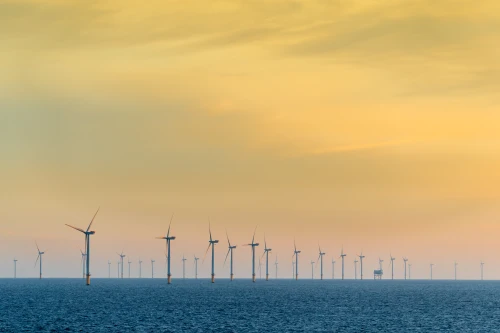As the energy grid evolves, understanding dispatchable vs. non-dispatchable power generation is crucial. In simple terms, dispatchable energy refers to energy sources that can be switched on or off based on demand, ensuring a stable power supply. In contrast, non-dispatchable energy depends on external factors, making it intermittent and less predictable.
What is dispatchable generation?
Dispatchable generation refers to energy sources that provide electricity on demand. These sources can adjust their power output to match real-time grid requirements, helping maintain grid stability and prevent power outages.
Key characteristics of dispatchable energy
On-demand availability – energy production can be adjusted to meet consumption needs.
Grid stability support – reduces power fluctuations and prevents blackouts.
Fast response times – can ramp up or down quickly based on energy demand.
Examples of dispatchable energy sources
Fossil fuels – coal, natural gas, and oil.
Nuclear power – provides a continuous and reliable energy supply.
Hydroelectric power – some hydro plants, particularly pumped storage facilities, can generate electricity within minutes.
Role of dispatchable power in grid stability
Dispatchable sources help balance supply and demand, ensuring uninterrupted power availability. For instance, hydroelectric facilities can generate electricity on demand in under 10 minutes, making them a key player in stabilising energy grids.
What is a dispatchable resource?
A dispatchable resource is an energy asset that contributes to dispatchable power generation. These resources ensure a steady and controlled electricity supply.
Definition of a dispatchable resource
A pumped hydro system is an example of a dispatchable energy resource. By moving water between reservoirs, hydroelectric plants can generate power quickly when demand spikes. However, a single-reservoir hydro facility with low water levels becomes non-dispatchable due to insufficient energy storage.
How do dispatchable sources balance supply and demand?
Rapid activation – adjusts energy production in real-time.
Demand-driven scaling – increases or decreases output as needed.
Smart grid integration – uses tools like smart thermostats for demand-side management.
What is non-dispatchable generation?
Non-dispatchable generation consists of energy sources that cannot be controlled or turned on at will. Their availability depends on environmental factors, leading to intermittent power generation.
Key characteristics of non-dispatchable energy
Intermittent supply – dependent on natural conditions.
Unpredictable output – power generation fluctuates based on weather patterns.
Limited control – cannot be switched on or off as needed.
Examples of non-dispatchable energy sources
Solar power – only generates electricity when sunlight is available.
Wind energy – requires sufficient wind speeds to produce power.
Tidal energy – relies on ocean wave conditions for generation.
Challenges in integrating non-dispatchable energy
Grid reliability issues – sudden drops in power generation.
Energy storage dependency – batteries are needed to store excess energy.
Fluctuating availability – difficult to predict and manage power output.
Key differences between dispatchable and non-dispatchable energy
Dispatchable vs. non-dispatchable energy
Overcoming non-dispatchable energy challenges
Energy storage – batteries and pumped hydro can store excess energy.
Hybrid systems – combining different energy sources for reliability.
Smart grid technology – enhancing efficiency through demand management.
How can dispatchable and non-dispatchable energy work together
To build a reliable, sustainable energy grid, dispatchable and non-dispatchable energy sources must complement each other.
Hybrid energy systems for grid flexibility
Co-located installations – combining solar and wind power at the same site ensures continuous energy production.
Integrated controllers – smart technology helps manage fluctuations by storing excess energy for later use.
Hybrid infrastructure – shared transmission networks can reduce overall grid costs.
The role of energy storage in supporting non-dispatchable power
Energy storage solutions transform non-dispatchable sources into dispatchable ones by storing surplus energy for later use. Examples include:
Battery storage – Lithium-ion batteries store solar and wind power.
Pumped hydro storage – transfers water between reservoirs to generate electricity on demand.
Microgrids – self-sufficient systems that operate independently from the main grid.
By integrating dispatchable, non-dispatchable, and energy storage solutions, we can achieve a stable, resilient, and sustainable energy future.


